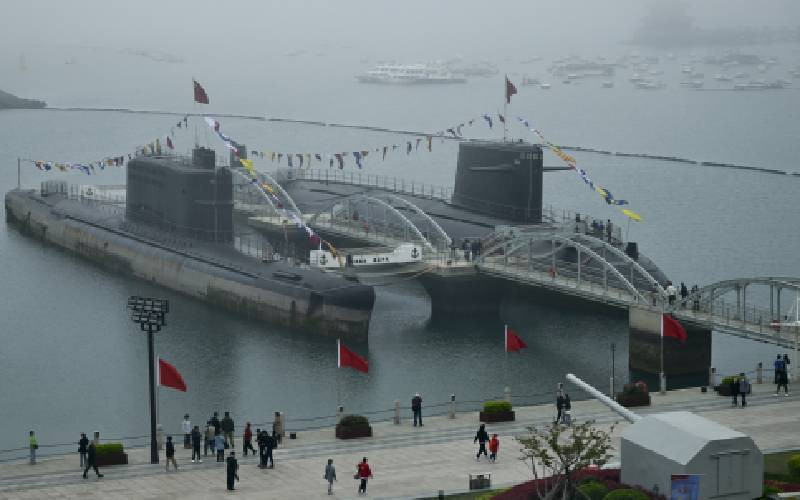While independence brought us vital freedom, the colonial policies of divide-and-rule, and invention of politicised, and opposed ethnic identities, continue to afflict Kenya.
By instituting a new constitution that entrenches multi-party democracy, the rights of the individual, and stronger, more accountable institutions, Kenya has turned a page on its history of authoritarianism and ethnic baiting for electoral violence.
But it is crucial, for young Kenyans especially, to understand the history of elections, ethnicity and enmity that has brought us to the present situation. In the independence election of 1963, Kanu, led by Jomo Kenyatta, fought for political leadership with the Kenya African Democratic Union (Kadu), led by Ronald Ngala and Daniel arap Moi.
Kanu took both Houses, and won majorities in Central, Eastern, Nairobi and Nyanza provinces. Kadu contented itself with the Rift Valley, Coast and Western. Thus began the political contest between the majority tribes in Central and Nyanza, against other minority tribes in Rift Valley, Coast and Western.
It is the split that ruthless and manipulative politicians have used to spark clashes leading to deaths, displacement and vast destruction of property ever since.
From the start, the new administration of Kenya resettled the landless by buying out large-scale farms owned by European settlers; in the face of Opposition from the political leadership in the Rift Valley and at the Coast.
Their bone of contention was that outsiders, ethnic groups from other regions, should not be allowed to purchase lands, which, instead, were to be reserved for indigenous peoples. This, however, cut against the national policy of "willing seller and willing buyer''.
The political fallout in 1966 between President Jomo Kenyatta and his Vice-President Oginga Odinga further exacerbated mistrust among the various tribes in Kenya. It led to the registration of an opposition party (KPU) by Mr Odinga supporters, and deepened the ethnicisation of political contest.
Over time, Kenya's electoral politics became deeply ethnicised, and the country divided into five large voting blocks: Gikuyu, Luhya, Luo, Kalenjin, and Kamba. To this day, the fear at the heart of this ethnic logic is that minority tribes will be dominated by their larger brethren – a fear especially pronounced among the ethnic elites fighting for a piece of the 'national cake' in Nairobi.
The governments of both Jomo Kenyatta and Daniel Arap Moi ruled by seeking coalitions of ethnic leaders. It was always a contested, ever-shifting arrangement, made far more dangerous by the cynical politics of the Cold War, which traded support for one ethnic leadership over the other. The assassinations of prominent politicians such as Tom Mboya and Robert Ouko, JM Kariuki and others added to the feelings of alienation and suspicion between groups.
After almost two decades of single-party rule under Kanu, the collapse of the Soviet Union ended the Cold War's uncritical support for the status quo, and ushered in multiparty politics. Political pluralism came to Kenya in 1991, and multi-party elections followed in December 1992.
Reflecting our history of ethnicisation, the election was fought on tribal ground, where Gikuyu and Luo voted for Mr Odinga, Mr Matiba and Mr Kibaki, while other tribes voted for KANU under Mr Moi. The election left the country divided along ethnic lines. There were violent incidents in Nairobi, Rift Valley, Nyanza and Coast regions, in which tribes termed ''foreigners'' lost their lives and properties to ''locals''.
The Kanu regime leaned on the support of the Kalenjin, and other minority tribes, and incited its supporters in Rift Valley against the Gikuyu, Luo and Kisii. Death and destruction followed.
Mr Moi had predicted that multi-party politics would bring tribal conflict, and endanger the very survival of the State, and further bouts of violence in 1997 might have seemed, to the superficial eye, to support his view. But Kenyans were determined to press on with their democratic aspirations, despite the cost of electoral competition in an ethnicised political arena.
What this history establishes is that Kenyans have suffered for their strengthening democracy, and particularly the popular enactment of the 2010 Constitution. It also demonstrates the wrongness of treating the 2007-2008 PEV as a unique event, as opposed to a continuum toward a stronger, more secure nation.
Stay informed. Subscribe to our newsletter
 The Standard Group Plc is a
multi-media organization with investments in media platforms spanning newspaper
print operations, television, radio broadcasting, digital and online services. The
Standard Group is recognized as a leading multi-media house in Kenya with a key
influence in matters of national and international interest.
The Standard Group Plc is a
multi-media organization with investments in media platforms spanning newspaper
print operations, television, radio broadcasting, digital and online services. The
Standard Group is recognized as a leading multi-media house in Kenya with a key
influence in matters of national and international interest.
 The Standard Group Plc is a
multi-media organization with investments in media platforms spanning newspaper
print operations, television, radio broadcasting, digital and online services. The
Standard Group is recognized as a leading multi-media house in Kenya with a key
influence in matters of national and international interest.
The Standard Group Plc is a
multi-media organization with investments in media platforms spanning newspaper
print operations, television, radio broadcasting, digital and online services. The
Standard Group is recognized as a leading multi-media house in Kenya with a key
influence in matters of national and international interest.









